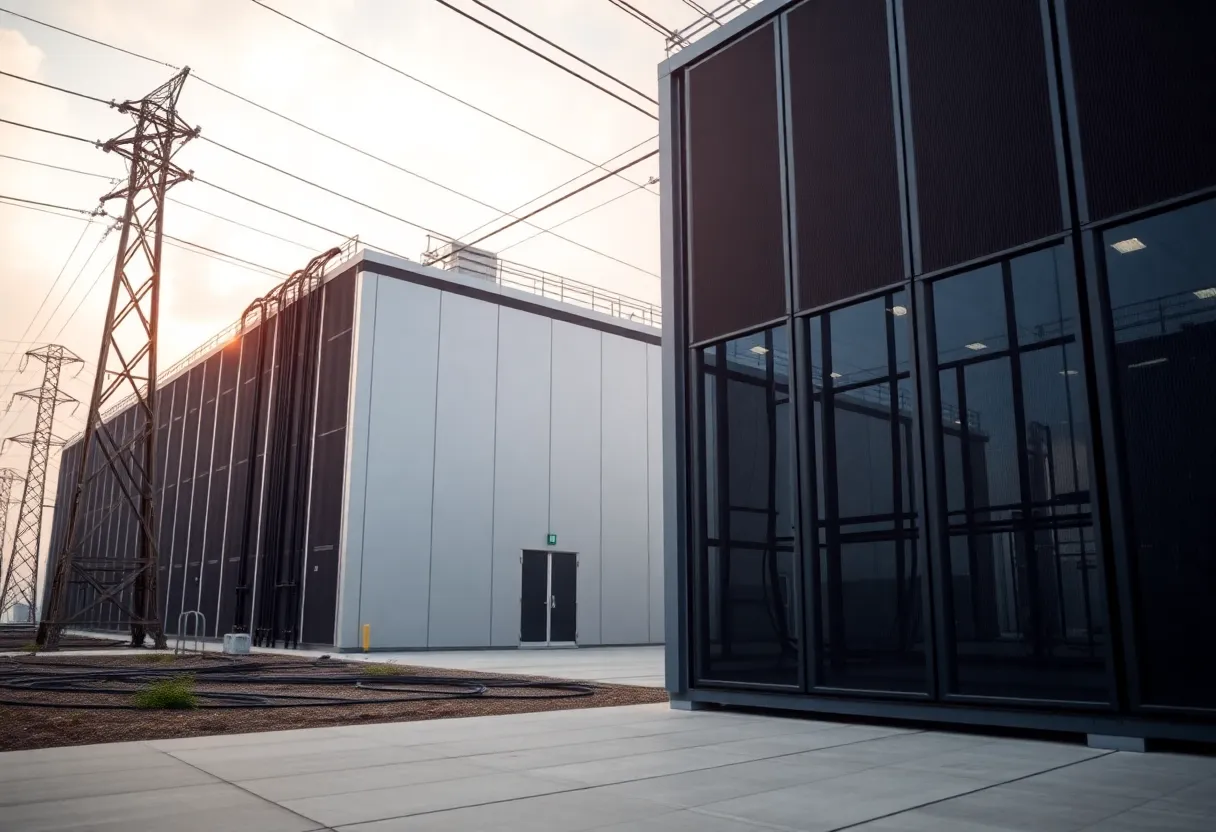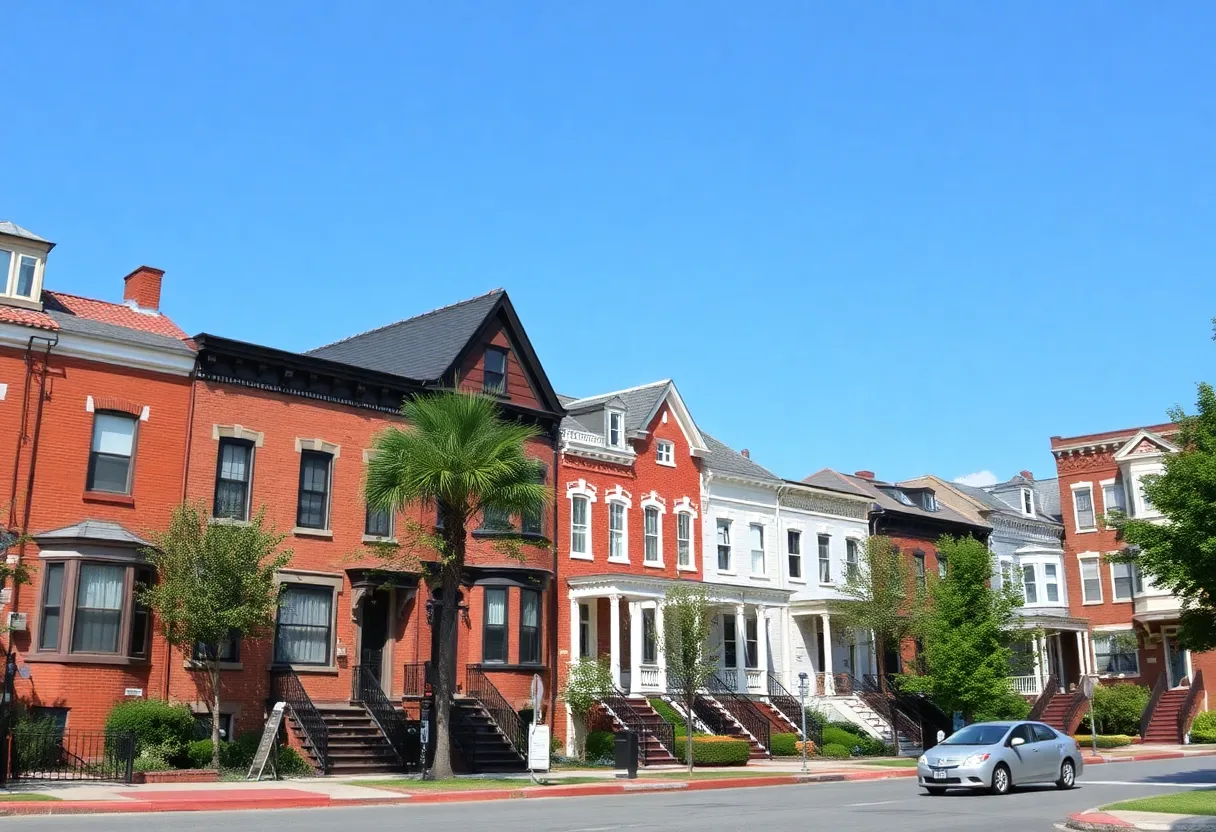News Summary
The expansion of data centers in Virginia, North Carolina, and Ohio is leading to increased electricity demand and concerns about utility costs. Dominion Energy projects a 5% annual rise in Virginia, while North Carolina anticipates 6 gigawatts of extra capacity needed. Ohio implements a new tariff for large data centers to alleviate cost burdens on residents. With rising utility prices and the push for sustainable energy solutions, local residents and advocates are raising alarms about the economic implications of these developments.
Richmond, Virginia – The rapid expansion of data centers is significantly increasing electricity demand in Virginia, North Carolina, and Ohio, leading to heightened concerns among residents and local businesses about rising utility costs and grid reliability. Utilities in these regions are scrambling to meet the new electricity needs while balancing environmental goals and economic implications.
In Virginia, Dominion Energy projects a 5% annual increase in peak power demand over the next 15 years, a trend that conflicts with the Virginia Clean Economy Act (VCEA), which mandates a transition to carbon-free energy by 2045. To address this looming demand, Dominion Energy has proposed a new 944 megawatt natural gas “peaker” plant, intended to provide supplementary power during peak usage times. This proposal, however, faces substantial opposition from clean energy advocates who argue it undermines the state’s push for sustainable energy solutions.
The situation has escalated as local residents express worries over surging utility bills linked to the growth of data centers just before the upcoming November 2025 elections. Many fear that the escalating costs of electricity will disproportionately affect households, particularly as data centers continue to expand their operations.
North Carolina is also grappling with similar challenges, with data center-related growth expected to necessitate an additional 6 gigawatts of electricity capacity. According to Duke Energy, much of this increase stems directly from the energy requirements of new data centers. As in Virginia, stakeholders in North Carolina are engaged in heated discussions to determine how to accommodate this soaring demand while striving to meet clean energy targets.
In Ohio, the landscape is shifting as the Public Utilities Commission has introduced a new tariff structure aimed at large data centers. Under this updated model, large data center operators are now required to pay a base cost equivalent to 85% of their projected electricity usage. This approach is designed to ensure that these operators contribute to the costs of necessary infrastructure upgrades instead of shifting the burden onto residential users.
The ripple effects of expanding data centers on utility prices are significant. The PJM Interconnection has reported that these expansions are the primary cause behind a projected 22% increase in wholesale electricity prices for 2025. Economic predictions indicate that the overall electricity demand in the United States is expected to grow by 2.5% annually through 2035, with much of the uptick driven by the demands of data center operations.
Consumer advocates and residents are increasingly raising alarms about the potential consequences of this rising demand. They argue that the higher utility costs represent a considerable wealth transfer from individual consumers to large corporations that benefit from these infrastructural expansions. Major tech companies such as Amazon and Microsoft are either planning or constructing data centers in these energy-strained regions, further compounding the issues facing local utilities.
As a potential solution to the strain on the existing grid, microgrid technology is gaining attention. Lawmakers are exploring new legislative measures aimed at encouraging the development of microgrids, which could ease some of the pressures on larger electrical systems while supporting local energy solutions.
The ongoing debate over how to manage growing electricity demand in conjunction with maintaining commitments to renewable energy is expected to intensify. As data centers continue to proliferate, addressing these challenges will require innovative policies and infrastructure developments.
Deeper Dive: News & Info About This Topic
HERE Resources
How to Leverage Real Estate Market Trends for Smart Home Buying Decisions
Burns & McDonnell Opens Construction Academy in Pearland
Baltimore Welcomes New Tenant at Tradepoint Atlantic
Challenging Times Ahead for Construction Industry
Challenges and Innovations in the Construction Industry
Significant Decline in Construction Starts Across Sectors
Quincy City Council Approves Infrastructure Projects to Combat Sinkholes
North Carolina’s Construction Industry Positioned for Growth
Federal Reserve Holds Interest Rates Steady, Builders Adjust
RealPage Acquires Rexera to Create AI-Driven Real Estate Platform
Additional Resources
- JD Supra: The Rise of Data Centers and Their Impact
- JD Supra: The Site Report on Construction Law
- Business Insider: Electric Bills Rise in 13 States Due to Data Centers
- Quartz: Americans’ Electricity Bills Rise Due to Data Centers
- New York Times: AI Data Centers and Electricity Costs
- Wikipedia: Data Center
- Google Search: Data Centers Electricity Impacts
- Google Scholar: Data Centers Energy Demand
- Encyclopedia Britannica: Data Center
- Google News: Data Centers Electricity Costs
Author: STAFF HERE BALTIMORE WRITER
The BALTIMORE STAFF WRITER represents the experienced team at HEREBaltimore.com, your go-to source for actionable local news and information in Baltimore, Baltimore County, and beyond. Specializing in "news you can use," we cover essential topics like product reviews for personal and business needs, local business directories, politics, real estate trends, neighborhood insights, and state news affecting the area—with deep expertise drawn from years of dedicated reporting and strong community input, including local press releases and business updates. We deliver top reporting on high-value events such as the Baltimore Book Festival, Preakness Stakes, and Artscape. Our coverage extends to key organizations like the Baltimore Chamber of Commerce and Visit Baltimore, plus leading businesses in shipping and healthcare that power the local economy such as the Port of Baltimore and Johns Hopkins Medicine. As part of the broader HERE network, we provide comprehensive, credible insights into Maryland's dynamic landscape.





